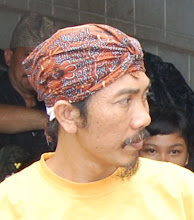
Source: www.nytimes.com
YOGYAKARTA, INDONESIA, February 24, 2010: ILast August when the private Islamic University of Indonesia decided to build a library next to the mosque. In the two decades the university had occupied its 79-acre campus outside Yogyakarta, no temple had ever been found. But chances were high that they were around. By Dec. 11, a construction crew had already removed nearly seven feet of earth. But the soil proved unstable, and the crew decided to dig 20 inches deeper. A backhoe then struck something unusually hard. The crack the backhoe left on the temple wall would become the main sign of damage on what experts say could be the best-preserved ancient monument found in Java, a Hindu temple.
Researchers from the government’s Archaeological Office in Yogyakarta headed to the campus the next day, excavated for 35 days and eventually unearthed two 1,100-year-old small temples. “The temples are not so big, but they have features that we haven’t found in Indonesia before,” Herni Pramastuti, who runs the Archaeological Office, said, pointing to the rectangle-shaped temple, the existence of two sets of linga and yoni, and the presence of two altars.
Historians believe that Hinduism spread in Java in the fifth century, followed three centuries later by Buddhism. Kingdoms hewing to both Hindu and Buddhist beliefs flourished in Java before Islam in the 15th century. But Islam itself incorporated beliefs and ceremonies from the other two religions. Just as some unearthed temples in east Java have a Hindu upper half and a Buddhist lower half, some early mosques had roofs in the shape of Hindu temples, said Timbul Haryono, a professor of archaeology at Gadjah Mada University here and an expert on Hinduism in Southeast Asia. Early mosques faced not in Mecca’s direction, but west or east in the manner of Hindu temples.
“Things didn’t change all of a sudden,” Mr. Haryono said. “Islam was adopted through a process of acculturation.” In Indonesia’s arts, like the wayang shadow puppetry that dramatizes Hindu epics, or in people’s private lives, traces of the earlier religions survive, he said. Food, flowers and incense still accompany many funerals for Muslims, in keeping with Hindu and Buddhist traditions. “Hinduism was Indonesia’s main religion for 1,000 years,” he said, “so its influence is still strong.” “This is Indonesia,” said Suwarsono Muhammad, an official at the Islamic University. In the long history of Indonesia, we have proven that different religions can live peacefully.”

Tidak ada komentar:
Posting Komentar